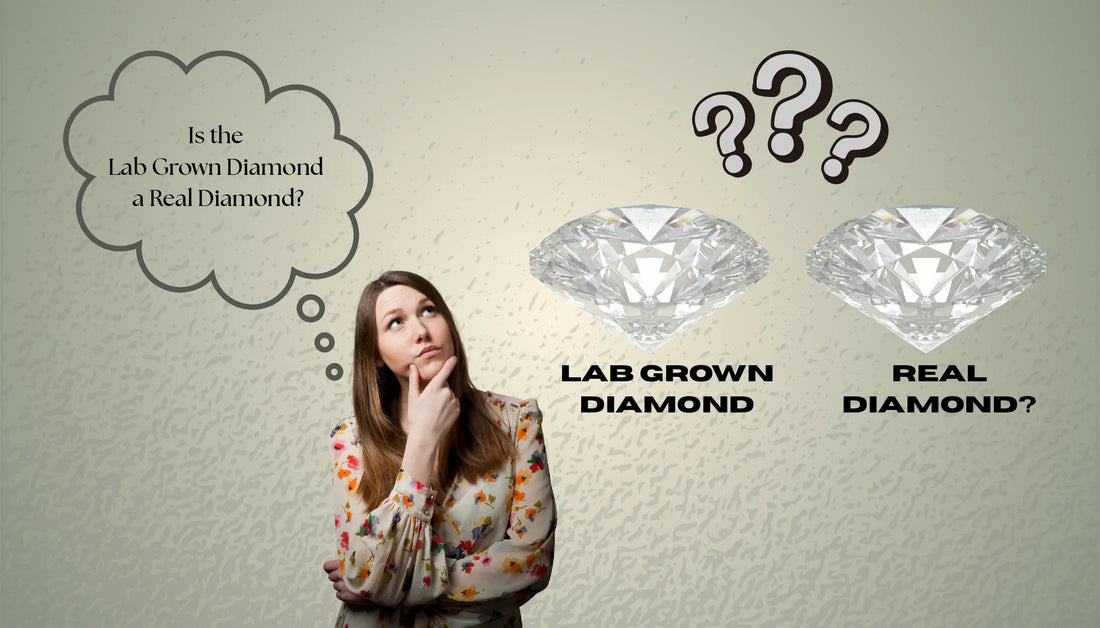
Is the Lab Grown Diamond a Real Diamond?
Finding the right engagement ring is a special experience. It is love, commitment, and an eternity bond. These days, lab grown diamonds are purchased more compared to the mined diamonds. They are economical, ethical, and as beautiful as natural diamonds. But how can you select the ideal lab grown diamond for your engagement ring? The blog explores detail about the lab grown diamond in detail.
What is a lab grown diamond?
A lab grown diamond is created in a laboratory using advanced technology that replicates the natural diamond-growing process. It has the same chemical, physical, and optical properties as mined diamonds. So, if you’re wondering: is a lab grown diamond a real diamond? The answer is yes, it absolutely is. These diamonds are not “fake” or “synthetic” stones. They are genuine diamonds, just grown differently.
The primary distinction lies in the origin. A natural diamond develops deep inside the earth over billions of years, whereas a lab grown diamond develops in just a few weeks in a controlled laboratory environment.
Why choose lab grown diamond foe engagement rings?
One of the largest reasons why couples now choose lab grown diamond rings is because they are ethical and environmentally friendly. Mining destroys the land and pollutes water. Lab-grown options are environmentally friendly since they are not produced by destroying the earth.
Another benefit is affordability. A 1 carat lab diamond cost is 30% to 40% less than an equal-sized and quality mined diamond. This allows you to obtain a larger, higher-quality diamond within your reach. In addition, the diamonds have certifications, similar to natural diamonds, with specifications of their color, clarity, cut, and carat.
Lab Grown Diamonds vs Natural Diamonds
When lab grown diamonds and natural diamonds are compared, both are indistinguishable to the naked eye. Only sophisticated gemological testing can tell the difference in terms of origin. Both shine equally, and both are equally resistant.
Natural diamonds might carry more emotional or sentimental value to some individuals. But lab grown diamonds provide contemporary beauty with ethical sourcing and improved value for money.
If you are concerned about sustainability, transparency, and affordability, lab grown diamonds are the best option.
Moissanite vs Lab Grown Diamond
Some individuals also look at moissanite vs lab grown diamond when they are purchasing rings. Though both are in vogue, they are not identical. Is moissanite a lab grown diamond? No, it's not.
Moissanite is another gemstone composed of silicon carbide. It displays more rainbow sparkle, whereas a lab created diamond possesses a clean, white brilliance. Moissanite is also less hard than diamond but remains sturdy.
If you desire a stone that is similar to a diamond but at a reduced price, then moissanite is your choice. But if you desire a genuine diamond, not differing in any way from natural diamonds, lab grown diamonds are your best choice.
Selecting the ideal lab grown diamond engagement ring
When you are picking lab grown diamond engagement rings, pay attention to the "4 Cs": cut, color, clarity, and carat weight.
-
- The cut determines the extent to which the diamond refracts light. A better-cut diamond glitters more.
- The color varies from colorless (most preferred) to light yellow.
- The clarity indicates the purity of the diamond from internal imperfections.
- The carat weighs its size and weight.
- You can choose various shapes: round, oval, emerald cut , or princess cut — based on your taste. Each shape brings a special charm to your engagement ring.
Designs are also significant. A simple solitaire brings eternal sophistication, and a halo setting brings extra sparkle. Choose a metal that will set off your diamond — white gold, yellow gold, or platinum.
Making a smart and sentimental choice
Couples of today desire responsible and meaningful choices. A lab grown diamond ring reflects modern values, love, sustainability, and trust. It shines with the same brilliance as a natural diamond but at a lower cost.
By choosing lab grown diamonds, you're not just buying jewelry; you're supporting innovation and ethical making. These diamonds are conflict-free, beautiful, and designed for this generation who cares about both style and conscience.
Conclusion
A lab grown diamond is not just adding beauty, it's a reminder of your journey together. Choosing a lab grown diamond makes that journey even sweeter. It gives you beauty, purity, and confidence.
So, when you choose your engagement ring, keep in mind that brilliance doesn't always mean it comes from the earth. Sometimes, it's nurtured with attention, precision, and purpose.
